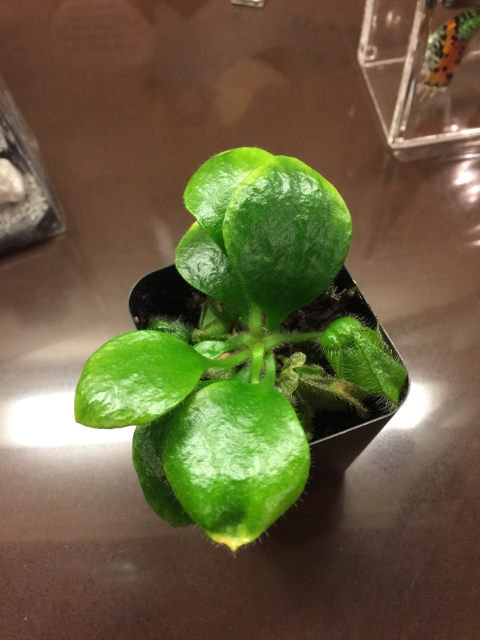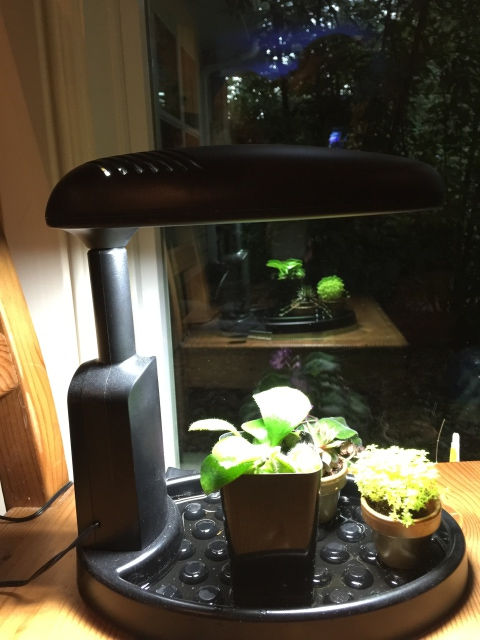Question
 Cephalotus
Cephalotus  Ceph set up
Ceph set up
Hello -
I have a cephalotus "Hummer's Giant" whose leaf tips have become yellow tinged. I am unsure if this is a normal part of the life cycle of the plant's non-pitcher leaves, as this is my first cephalotus, which I have had for a couple of months. I have your DVDs, and have watched all of them, and have also read the culture information on your website.
My cephalotus is grown as follows:
- Indoors, under 6500K fluorescent lights, approximately 6 inches above the plant
- The temperature in the house ranges from 71-74 F
- The plant is bottom watered with reverse osmosis or rainwater, and the soil stays moist, but not wet.
- The plant sits on a water tray, which keeps the pot above the water but helps maintain a slightly more humid microclimate.
- The plant has been lightly misted once in the last month with dilute orchid fertilizer.
The plant was putting out new pitchers and leaves until recently. It has now gone "quiet" but as far as I can tell the crown is intact with no signs of rot. No appreciable pests are identified on the plant.
Thank you for your help.
AnswerHi Angelyn,
Let me address your question first. The yellowing is a normal part of leaf aging. From the overall appearance of your plant this is not at all abnormal. Your general climate conditions for a Cephalotus is fine.
Let's talk lighting. The light your using is Glentronic's "Smart Plant Light". I've had these in the past, and they are very cute, and a great concept. The only problem, they are not even close to being bright enough for most carnivorous plants. The only cp I've found that do ok under them are Mexican Butterworts. Your plant needs much more light than this. Cephalotus normally have shorter, stockier leaves with some red hues, and pitchers definitely have some red in them. These big green leaves are a dead give away the plant wants more light.
Here's what you can do. Try moving you plant to a windowsill with partial sun. East windows work very well, but a South window will to. If you only have a North window, try combining the light with the window. In any event, the plant should have some direct sun for part of the day. The other option is to use stronger fluorescent lights. A 23 watt compact fluorescent, 6500k, placed 6 inches above the plant on a 13 hour day would work very well. One thing to be aware of when you move the plant to brighter light is that you will probably see some leaf burn. This is very normal as plants make the transition from too shady conditions to normal light conditions for them. Just cut off any leaves that burn and give the plant time. Bump up your light fertilization to once every two weeks.
You also will want to consider a larger pot for the plant. Hummer's Giant can get pretty good sized for a Cephalotus. A 5-6" pot is a good size for them. They have long roots, so tall pots are best. We use a mix of long-fiber New Zealand sphagnum moss with some perlite mixed in. You can also use a 50/50 peat moss and sand mix with them. Like you're already doing, keep the soil moist, but not sitting in water.
Good Growing!
Jeff Dallas
Sarracenia Northwest
http://www.growcarnivorousplants.com







